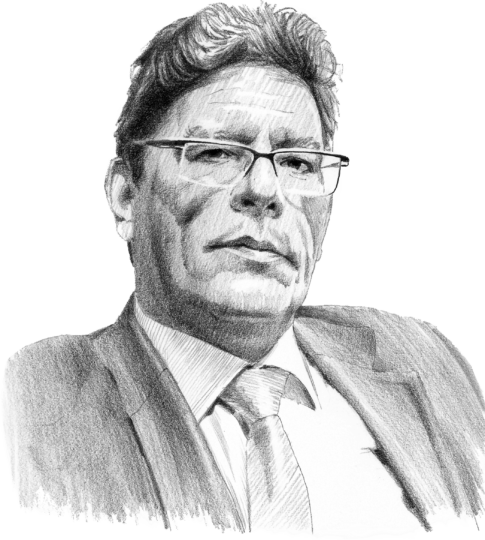Why Russia’s political regime is not changing, and how it can
Although predictions of systemic transformation in Russia have invariably proved wrong, sooner or later, fundamental changes in the current political regime must occur. Recent events suggest that they may start with a crucial yet often unappreciated element of the power structure.
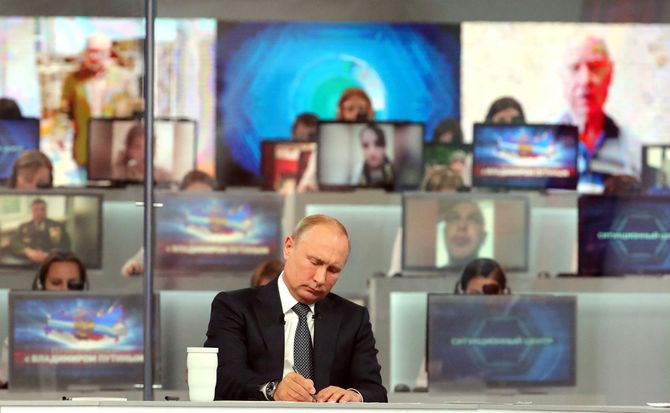
In a nutshell
- Russia’s political regime has survived more by adaptability than repression
- Its crucial skill is picking apart any social coalitions that threaten the system’s integrity
- However, this flexible technology of power has built-in vulnerabilities
During the past two decades, analysts have found lots of potential sources of instability in Russia’s political regime and offered multiple scenarios for its modification, ranging from a rapid slide into ruin to a gradual transition into something else (across a very broad spectrum from full-scale democracy to all-out totalitarianism).
Almost all of these forecasts were well-founded and many seemed probable – almost inevitable, even. Most of this writer’s own analyses at GIS belong to the same genre, and I am not going to start debunking them. Almost everything they describe is really happening: sporadic attempts to increase the importance of parliament; unresolved tension around Chechnya; conflicts between “government liberals” and the so-called siloviki, or senior officials in the security apparatus; continued activity by the nonparliamentary opposition; growing friction in relations between church and state; the increasing discontent of Russian regions; painful cuts in the state’s social commitments; a series of electoral failures suffered by pro-Kremlin candidates; and many other developments.
The radical transformations prophesied for the regime have not happened.
Of course, the Russian regime is evolving. In 2019, it is not like what it was in 2000, 2004, 2008, 2012 or 2014. And yet, it is still the same regime. The radical transformations that had been continually prophesied – with delight or horror – have not happened. Why? Is systemic change possible in Russia at all?
The answer is clearly, yes. Nothing is permanent, especially not political regimes. This truth has been preached from time immemorial, by the likes of Heraclitus of Ephesus (“Everything changes and nothing stands still”) to Rocky Balboa (“Everybody can change”). For the political analyst, the key operational question is how the regime achieves dynamic stability. How does it change without changing its essential nature? This ability is what allows the regime to meet challenges without allowing profound, systemic changes. Yet it is evident that under certain conditions, such changes could actually take place.
Another commonplace is that change does not happen on its own. It is not caused by the disembodied “spirit of the times” (Zeitgeist) or similarly faceless “peoples” or “nations.” Change occurs from the interplay of specific social and political forces (actors). A deep understanding of this fact is the real source of power for the Kremlin’s political machine, which has well-honed skills for neutralizing any actors capable of triggering regime change.
Selective repression
The primary method for neutralizing such threats is to differentiate and pick apart any emerging social coalitions, disassembling them into their component parts. The range of techniques that can be used against various targets is quite wide. They include co-opting potential opponents into the ruling elite or its supporting apparatus, simple bribery, or the creation of privileged enclaves where gifted individuals or groups can put their talents to good use (at the cost of being isolated from or put into conflict with broader social strata).
Alternatively, repressive methods can be employed. Institutions that could serve as rallying points for critics of the regime can be undermined or destroyed. Dissidents can be forced to emigrate or retire from public life (often via blackmail or libel). Pretexts can easily be found for police measures and legal prosecution, especially since typical Russian business practices provide ample scope for manufacturing criminal cases. (Those who complain about “selective” law enforcement should stop and consider what would happen if it were nonselective.)
Repression is used against opponents and loyalists alike.
Finally, there is direct violence, sometimes taking the form of political murders like that of Boris Nemtsov in 2015. Usually, however, physical repression is limited to less drastic measures such as beatings, never traceable to the higher authorities. Repression certainly exists, but it would be difficult to prove the regime is directly responsible. Sticks and carrots are both applied selectively.
It is not often noticed that these same techniques are used not only against actual or potential opponents, but against loyal groups as well. There are no untouchables in present-day Russia. Oligarchs, ministers, governors, prosecutors, army generals, senior security and policy officials, to say nothing of rank-and-file functionaries, regularly run afoul of the system, suffering imprisonment or an untimely demise. Nobody is safe. In the same vein, no loyal group can expect to leverage its influence into an explicit political program, whether it be regime liberalization or a harder line.
Dissociative methods
It is sometimes said that Russia is becoming increasingly class-specific, though in a feudal rather than a Marxist sense. Society is fracturing into estates with different rights and duties, posing substantial obstacles to upward social mobility.
At times there has even been the talk of a “new nobility,” with a nod to the sudden popularity of Tsarist-style cadet corps – semi-military boarding schools that combine a decent secondary education with an intense inculcation of patriotism. There are already nearly 100 such schools across the country with close to 100,000 cadets and their numbers are growing rapidly. These institutions are becoming increasingly popular for children of officials from the middle and upper-middle ranks of the state bureaucracy, especially among the siloviki.
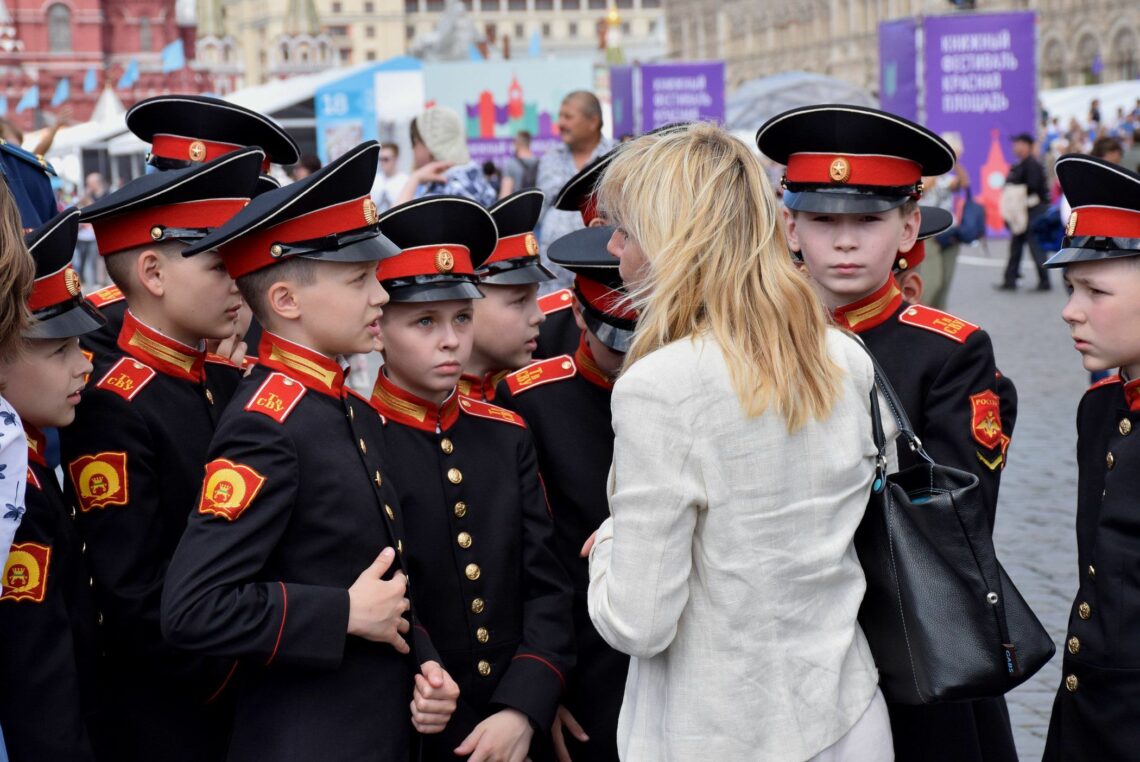
Even so, it is hard to imagine that this “new nobility” will start to self-identify as an autonomous actor with its own values and interests. And even if it did, these child cadets would be targeted for the same dissociative measures that their parents are subjected to now. The regime is not blind enough to overlook the possibility of “new Decembrists” – emulating the young officers, heroes of the patriotic war against Napoleon, who tried to overthrow Tsar Nicholas I in 1825.
This also explains the Russian government’s surprising embrace of e-government technologies, whose level and quality leave behind those of most European nations (except Scandinavia and the Baltic states). By focusing the populace’s discontent on small everyday problems (e.g. cluttered courtyards and stairwells, potholed streets, balky public transport, poor education and healthcare services) and, in many cases, providing quick fixes, the regime prevents public dissatisfaction from reaching critical mass and, most importantly, from being expressed as a generalized political grievance.
The cumulation of discontent is what destroyed the Soviet Union.
The cumulation of such feelings is precisely what destroyed the Soviet Union. Starting in the mid-1980s, the unbearable humiliations of everyday life in all social groups, including the privileged strata, turned into a shared conviction that “This is no way to live” and a general demand for “Changes! We want changes!” (respectively, the titles of a cult documentary and rock song of the period). These feelings were made political by their mass scale. They can only be neutralized by atomizing the dangerous “mass” (also known as the “nation”) into many local communities, as specialized as possible, or even better, into individuals. This process destroys the impetus of political movements, replacing both policy and politics with the safer, technocratic idea of public administration.
Timely concessions
None of this strays very far from the old adage of divide et impera. But another seldom-noticed feature of Russia’s political regime gives it tactical flexibility. Surprisingly often, the regime makes concessions. It makes them every time there is visible public dissatisfaction over a problem that does not concern the very essence of the regime, but which might produce a snowball effect.
In such cases, unpopular regulations are amended or revoked. Draconian laws may remain a dead letter, on the books but unenforced. Illegal meetings and demonstrations may be allowed to proceed without interference from the police. Nongovernmental organizations (NGOs) that have been officially classified as undesirable “foreign agents” continue to function and sometimes even receive presidential grants. Free universities that had been pushed to the brink of closure are suddenly allowed to renew their activities. Formally forbidden online resources such as (Telegram.ru) miraculously remain accessible. Anti-clerically minded local communities succeed in blocking the return of St. Isaac’s Cathedral in St. Petersburg to the Orthodox church and construction of a new church in downtown Yekaterinburg. Landfills and environmentally harmful factories in residential neighborhoods are closed down. Pre-trial imprisonment is replaced with house arrest or a signed acknowledgment of travel restrictions, prison terms are commuted, criminal cases are quietly allowed to drop.
Tactical defeats strengthen the regime in the long-term, strategic sense.
Such concessions do not always happen, and none of them occur quickly. Demonstrators’ demands are never met in full, just enough to weaken and demobilize the protests. Any retreat by the regime is immediately followed by a new show of force. Yet these behaviors are so frequent that it is difficult not to see a pattern. If a conflict with the authorities is well-mobilized, nonviolent and receives maximum publicity, the regime usually retreats. These tactical defeats strengthen the regime in the long-term, strategic sense, because they allow burgeoning conflicts to die down before they turn political.
The Golunov case
One recent incident stands out – the case of journalist Ivan Golunov. While superficially similar to the pattern described above, the story appears to reveal something important about the limits of regime durability and the efficiency of its defense techniques.
On June 6, Mr. Golunov, a 36-year-old investigative reporter for the opposition-minded, Latvia-based online publication Meduza, was beaten up and arrested by Russian police on charges of drug distribution. These charges against the investigative reporter, who specialized in corruption cases, were obviously trumped up, as became evident in a matter of hours. Planting illegal narcotics on suspects is a routine police practice in Russia (as in many other countries) and 99 percent of the time has no political subtext. Usually, it happens at the behest of criminals working with “dirty cops” to settle personal accounts or simply to improve police statistics.
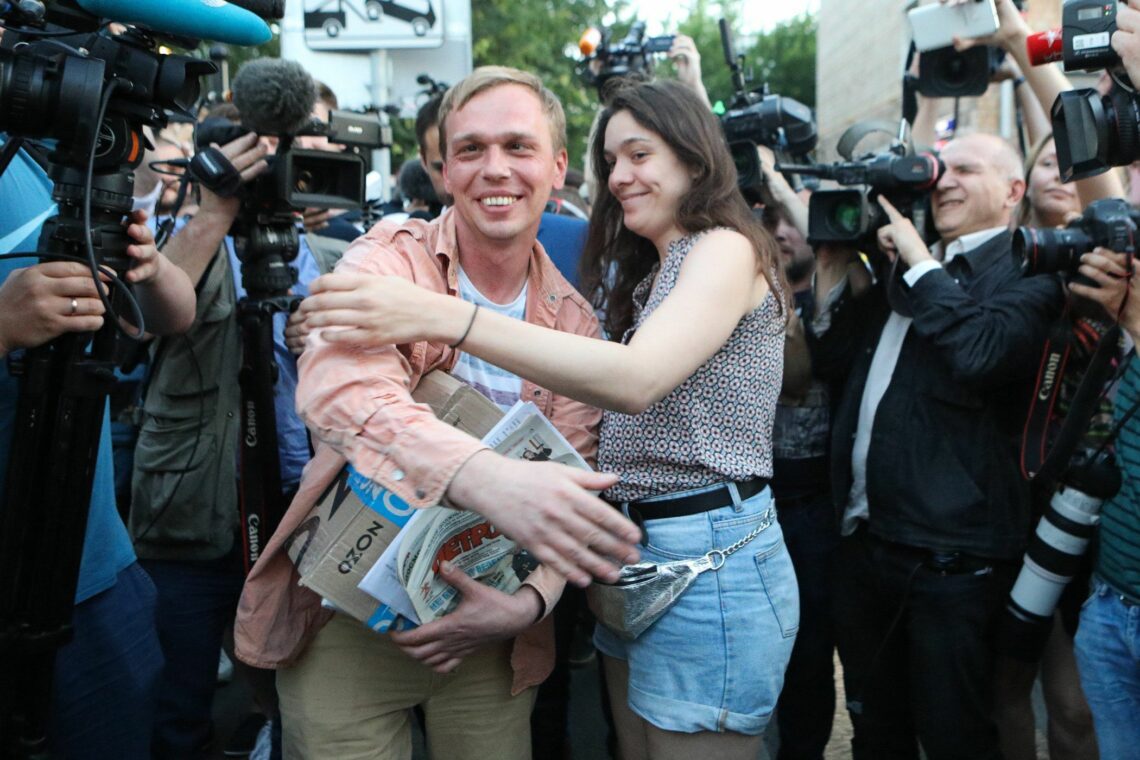
Mr. Golunov was not well-known or politically active. As a muckraker, his audience was tiny compared with the anti-corruption investigations of Alexey Navalny, for example. As a result, the Golunov case seemed destined to take its place among dozens of similar stories, where independent journalists were unlucky enough to cross someone powerful and suffered the consequences. At best, he might be mentioned by a media watchdog like Freedom House. Every year, thousands of Russians are sentenced under similar charges.
Yet astonishingly, the media community – not just Meduza and its sympathizers – immediately rose in Mr. Golunov’s defense. This kind of professional solidarity was virtually unprecedented in Russia. After some hesitation, employees of the official mass media also started to voice their support. As early as June 7, individual protesters began picketing Moscow police headquarters. The picketers were immediately detained, but hundreds more lined up to take their place. The event continued all night and for the entire next day. Similar pickets were launched in other Russian cities.
The regime blinks
On June 8, the court suddenly ordered Mr. Golunov, who had pled not guilty, released from jail to house arrest. Such leniency is highly unusual in drug cases. On June 10, three major Russian business newspapers – Vedomosti, Kommersant and RBK – ran identical front pages with a strong-worded declaration about the Golunov case under the headline “I/We – Ivan Golunov.” The gesture was all the more remarkable because these once-proud newspapers had been stripped of their independence: just two weeks before, Kommersant’s entire political staff had been forced to quit under pressure from owner-oligarch Alisher Usmanov.
With a few hours, the entire print run of all three newspapers was sold out. By evening, the complete set of three was being offered at online auctions for the equivalent of 200 euros (versus a newsstand price of 1.50 euro). For June 12 (which is Russia Day, a national holiday), a protest march for Mr. Golunov was announced in downtown Moscow. The journalists who organized the rally made it clear to the authorities that they planned to go ahead whether it was legal or not.
Faced with a minor incident, the authorities caved in fast and decisively.
These events were reported up to President Vladimir Putin. On June 11, all charges against Mr. Golunov were dropped and the policemen who initiated the case were suspended from work. The Investigative Committee of the Russian Federation (equivalent to the FBI, and independent of the Russian police) was assigned to look into the circumstances of the journalist’s arrest. Without waiting for its findings, at the request of Interior Minister Vladimir Kolokoltsev, President Putin fired two police generals whose subordinates were involved in the case.
As the investigation continues, Mr. Golunov has been granted the status of a protected witness and will be allowed to testify against those who arrested him. The June 12 protests went ahead, even though Mr. Golunov had been released. They were dispersed by police, who detained more than 500 people, including Alexey Navalny (everyone was soon released without charges.) On June 21, three leading newspapers in Dagestan (an autonomous region bordering Chechnya) ran similar front pages (“I/We – Abdulmumin Gadzhiev”) supporting a local journalist arrested on dubious charges of financing terrorist activities.
Telltale reaction
It does not make much sense to ask why the case of a rank-and-file journalist should motivate such turbulent events or provoke an unprecedented demonstration of solidarity in the mass media community. That would be exactly like asking why the private tragedy of street vendor Mohamed Bouazizi sparked the Tunisian revolution of 2010-2011, which in turn led to the Arab Spring. The camel never knows which straw will break its back (or at least goad it into casting off an intolerable burden).
What is interesting and notable about the Golunov case, which would seem a minor, absolutely typical incident in Russia, is how fast and decisively the authorities caved in to pressure from below, even sacrificing high-ranking members of the siloviki. The last time something like this happened – during the 2011-2012 wave of street demonstrations – a massive program of political reform was announced, though the measures had little to do with the protesters’ demands.
Instead of canceling the falsified elections to the State Duma and calling new ones, the government proposed to return to the idea of electing governors and easing restrictions on registering political parties – issues not even mentioned by the protesters. These changes were implemented even after the protests were neutralized by the dissociation strategy described above. Back then, the protests were mass-scale in Russian terms. And they were happening at a moment of significant uncertainty about the future shape of the regime (Mr. Putin had not yet reassumed the presidency, and there was still some opposition among the political elite to his return to that post).
Mr. Putin’s approval rating hit an all-time low and is poised for further decline.
Today, political uncertainty is also on the rise. President Putin’s approval rating has hit an all-time low and seems poised for further decline. Sociological research indicates that social discontent is growing and that the popular mood is becoming radicalized. Political insiders (it is hard to say whether they are well-informed) report perplexity and disorientation among the ruling elite.
My hypothesis, however, is more specific. The regime’s overreaction did not occur in a vacuum; it was triggered by the sudden consolidation of the media community in response to what was a random event of little importance. This event uncovered the true nature of the regime and revealed an important area of vulnerability.
Media machine
Both the origins and the daily operations of Russia’s political regime are par excellence a media phenomenon. Modern Russia is a perfect example of “the society of the spectacle”as described by French philosopher Guy Debord. Vladimir Putin’s rise to power, his initial rousing successes, his evolution from a “military leader” who put down the embarrassing revolt in Chechnya to a “president of hope” dispensing the largesse of oil wealth into today’s “national leader” – irreplaceable even after the populace’s hopes for a better life have faded – all these transformations were effected, first and foremost, by media activity, which produced electoral victories as a consequence.
The same could be said of Mikhail Gorbachev’s perestroika, which began with the media policy of “openness” (glasnost), of Boris Yeltsin’s seizure of power after the failed 1991 coup, of Yeltsin’s media-driven victory in the hard-fought 1996 presidential elections, and the anxious casting search and succession procedure that handed supreme power to Mr. Putin in December 1999.
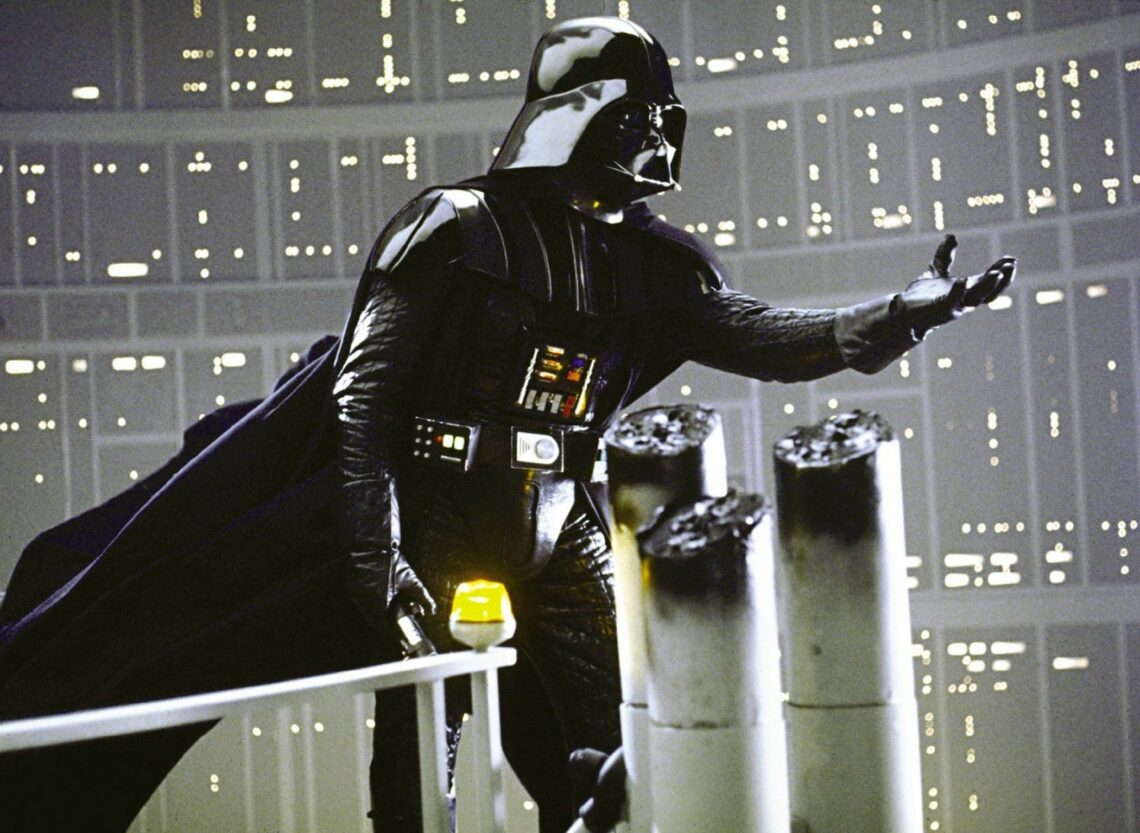
The hidden hand behind all these events is not the mythical KGB, but modern mass media that have created and sustained the “symbolic Putin” – a beneficent, omniscient and all-powerful entity much more potent than the living, breathing Vladimir. The legitimacy of the regime is based upon this symbolic figure. No other individuals or institutions can draw upon autonomous sources of authority, except perhaps the Russian Orthodox Church and Chechen leader Ramzan Kadyrov.
The media used to create this figure were initially and primarily the federal television channels, or “information weapons of mass destruction,” as they are called in Russia. These outlets were later joined by almost all federal and regional media, both printed and electronic. Only a few independent holdouts were allowed to survive as a way of blowing off steam. Then, as social networks developed, this media system was augmented with informal teams of internet trolls, flooding what had initially seemed a domain of freedom with pro-regime information. (The uncontrolled activity of these teams, carried out at their own risk outside the Russian segment of the World Wide Web, was mainly responsible for producing the West’s panic-ridden reaction to alleged “Russian meddling.”)
Design flaw
This media machine employs tens if not hundreds of thousands of Russian professionals. They cannot be easily replaced, and there is no reserve mechanism for controlling public awareness. Buying their loyalty is not cheap, but the expense has been repaid many times over. While there are plenty of discontented groups in Russia – long-haul truckers, anti-corruption warriors, vendors of imported goods, environmental activists, activists in local communities, religious, ethnic and sexual minorities, academics, physicians, teachers and internauts who prefer to be anonymous online – none pose a particularly grave threat, because none touches the live nerve of the regime. This even applies to retired people and the security and uniformed services – the siloviki.
For a single incident to provoke a chain reaction, it must become widely known – through the media.
Such a conclusion flies in the face of conventional analysis of regime change. Some who prophesy imminent upheaval (and have often been doing so for years) usually predict that at some point, an order to shoot protesters will be issued – and will be disobeyed. This, of course, could happen. For ordinary soldiers to disobey an order, however, they must first realize that such disobedience is possible. That knowledge can only come from the media. And for a single instance of disobedience to provoke a chain reaction, it must become widely known – again through the media.
This explains why the regime’s dissociative strategy is effective at dealing with virtually all other challengers. The one truly dangerous protest movement would come from those who technically service the media regime. An analogy here would be to the Death Star in Episode IV of George Lucas’s Star Wars series. The only reasonable explanation for the tiny vulnerability used by the rebels to blow up the planet-destroying space station is that it could not have been constructed in any other way: the flaw was an immanent design feature. In the same way, Achilles’ heel was a direct consequence of the legendary Greek hero’s invulnerability everywhere else.
In short, such is the situation of Russia’s political regime. Born of the media, it can be changed by the media. The regime knows this.
Loyalist rebels
The fact that the media can change Russia does not necessarily mean that they would. This kind of scenario seems even more implausible when one considers that servility, venality and cowardice have become distinctive features in the absolute majority of the Russian media community. In those circles, there is a popular saying: “Whose turn is it tonight to tell true lies?”
Even in the Golunov affair, the burgeoning media coalition started to fall apart only a few hours after the journalist was released. The Meduza editorial board announced it was going back to work and even appealed to protesters not to join the unauthorized march (Mr. Golunov did not attend, either). Those who braved the police immediately branded Meduza and other no-shows as collaborators. This sort of squabbling is a favorite pastime in Russian opposition circles, which helps explain their miserable state. It is a classic illustration of the old Russian proverb of beating the dog before the lion.
Momentous changes are sometimes initiated by the people you least expect.
And yet, momentous changes are sometimes initiated by the people you least expect. Who would have guessed that Italian judges and prosecutors, corrupted to the bone, would transform the country’s political landscape in 1992 by launching the “Clean Hands” operation? Who could imagine that in 2019, parliamentary deputies in Moldova – not only corrupted but also cowed into total submission – would suddenly rise up against the country’s absolute master, the oligarch Vladimir Plahotniuc, and drive him out in an unnatural coalition of pro-Western and pro-Russian forces to restore constitutional order?
In the Moldovan case, everyone was most amazed that Russia, the European Union and the United States all spoke with a common voice to support the transition. But this unlikely external alliance would have meant nothing without the internal actors who staked everything and acted. Most importantly, these were the same internal actors whose loyalty – or at least passivity – had long sustained the regime, not those who had helplessly criticized or attacked it from outside.
What is true about Italy or Moldova (or Zimbabwe) also applies to Russia. Change is possible. Moreover, we know which actor can initiate change, and it appears the actor is aware of this as well. That is the main conclusion to be drawn from the Golunov case.
It is not yet clear when and under what conditions the actor will decide to act, or what exactly will constitute the last straw. These things are never known in advance. Even less evident is the direction of future changes and the shape of a new equilibrium – but that is the nature of truly deep political transformations. The future is not set, but it is coming. We can now make an educated guess about the first moves heralding its arrival.
